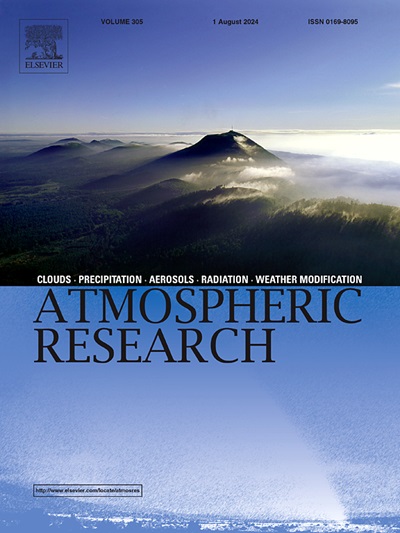Analysis of the meteorological factors and atmospheric circulation factors over SPEI drought index in Haihe River Basin, China
IF 4.5
2区 地球科学
Q1 METEOROLOGY & ATMOSPHERIC SCIENCES
引用次数: 0
Abstract
Drought will cause huge losses to humans. Therefore, there is an urgent need to explore the factors that control drought, and the changes that cause it in the context of global warming. Although drought is controlled by multiple factors, few studies have comprehensively considered the multiple controlling factors' effects at different time scales. For the Haihe River Basin (northern China), we investigated trends in meteorological drought and associated meteorological and atmospheric circulation factors for 1960–2017 using Mann-Kendall tests and wavelet transform coherence (WTC) analysis. Multiple wavelet coherence analysis was used to examine the multiple factors' combined effects at different time scales. The Standard Precipitation-Evapotranspiration Index, an index of drought, decreased by 0.138 per decade, and the climate became warmer and drier over the 58 years. The meteorological factors with the greatest influence on drought were relative humidity (RH), the combination of mean temperature (Tmean) and RH, and the combination of Tmean, RH, and sunshine duration. Atmospheric circulation factors most affecting drought were the Arctic Oscillation (AO), the combination of the Pacific Decadal Oscillation (PDO) and AO, and the combination of AO, PDO, and the North Atlantic Oscillation (NAO). Among the mixed two-factor combinations, the combination of RH and the El Niño Southern Oscillation had the largest impact on drought. The impact of meteorological on drought was greater than that of the atmospheric circulation factors. More research on teleconnections of drought signals is needed to prevent drought.
海河流域SPEI干旱指数的气象因子和大气环流因子分析
干旱将给人类造成巨大损失。因此,在全球变暖的背景下,迫切需要探索控制干旱的因素,以及引起干旱的变化。尽管干旱受多种因素的控制,但很少有研究综合考虑多种控制因素在不同时间尺度上的作用。以海河流域为研究对象,利用Mann-Kendall检验和小波变换相干性(WTC)分析了1960-2017年气象干旱及其相关气象和大气环流因子的变化趋势。采用多小波相干分析,考察了不同时间尺度下多因素的联合效应。干旱指标“标准降水-蒸散指数”每10年减少0.138个,气候变暖变干。对干旱影响最大的气象因子是相对湿度(RH)、平均温度(Tmean)与RH的组合、平均温度、RH和日照时数的组合。对干旱影响最大的大气环流因子是北极涛动(AO)、太平洋年代际涛动(PDO)与AO的组合、AO、PDO与北大西洋涛动(NAO)的组合。在混合双因子组合中,RH和El Niño南方涛动的组合对干旱的影响最大。气象因子对干旱的影响大于大气环流因子。为了预防干旱,需要对干旱信号的遥相关进行更多的研究。
本文章由计算机程序翻译,如有差异,请以英文原文为准。
求助全文
约1分钟内获得全文
求助全文
来源期刊

Atmospheric Research
地学-气象与大气科学
CiteScore
9.40
自引率
10.90%
发文量
460
审稿时长
47 days
期刊介绍:
The journal publishes scientific papers (research papers, review articles, letters and notes) dealing with the part of the atmosphere where meteorological events occur. Attention is given to all processes extending from the earth surface to the tropopause, but special emphasis continues to be devoted to the physics of clouds, mesoscale meteorology and air pollution, i.e. atmospheric aerosols; microphysical processes; cloud dynamics and thermodynamics; numerical simulation, climatology, climate change and weather modification.
 求助内容:
求助内容: 应助结果提醒方式:
应助结果提醒方式:


